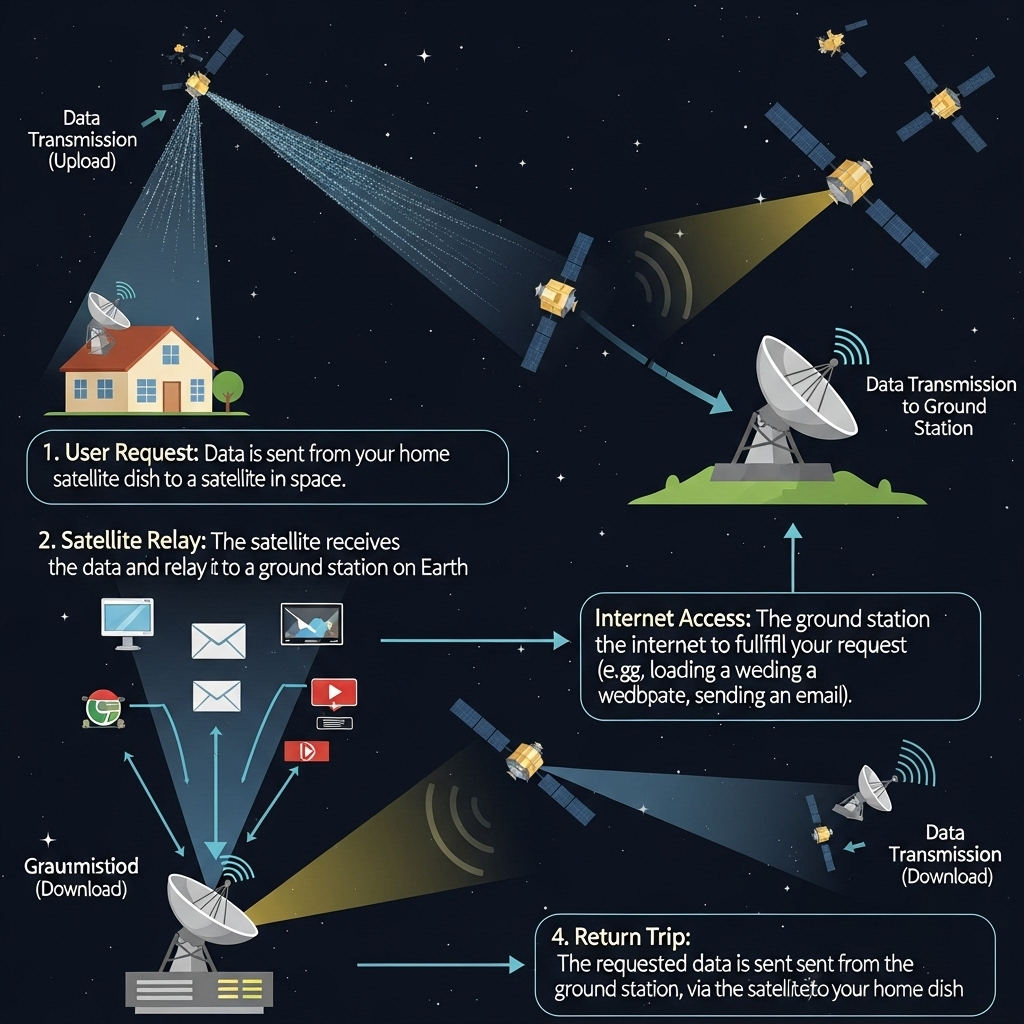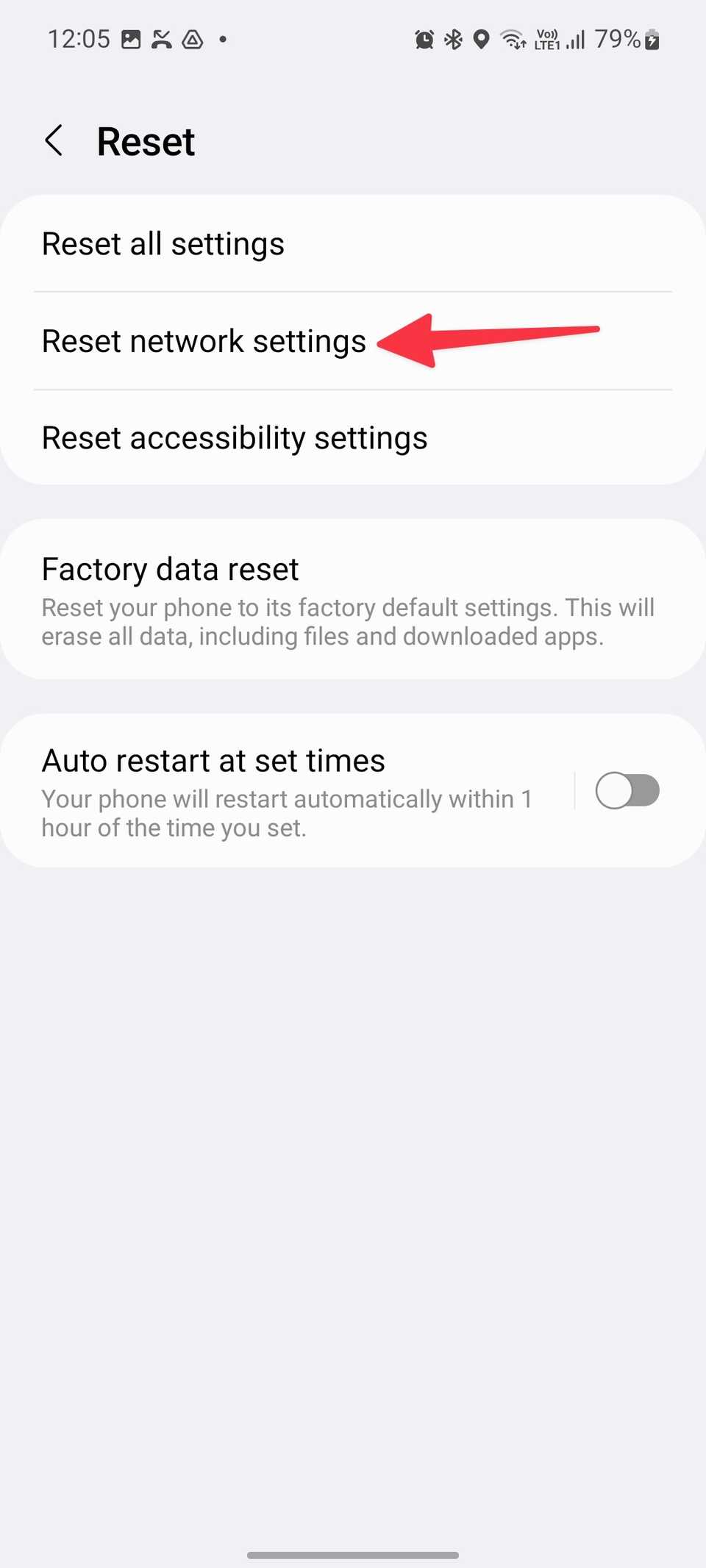Imagine having fast, reliable internet no matter where you live—even in the most remote spots. Using satellite internet at home can make this a reality for you.
Whether you struggle with slow connections or no service at all, satellite internet offers a powerful solution. You’ll discover how it works, what you need to get started, and the real benefits you can enjoy. Keep reading to find out if satellite internet is the right choice to transform your home online experience.
How Satellite Internet Works
Satellite internet uses signals sent from space to connect homes to the internet. It is useful in places without cables or fiber connections.
The system involves satellites, ground stations, and user terminals working together to provide internet access.
Satellite Signal Transmission
Satellites in orbit send and receive signals to provide internet service. They act like relay stations in the sky.
The satellite receives data from ground stations and sends it to user terminals on Earth. It also sends data back the same way.
- Satellites orbit about 22,000 miles above Earth
- They use radio waves to send signals
- Signals travel fast but can be affected by weather
Ground Stations And User Terminals
Ground stations connect the internet to satellites. They send data from the internet to the satellites in space.
User terminals are the devices at homes that send and receive signals from satellites. They include a satellite dish and a modem.
- Ground stations have large antennas to communicate with satellites
- User terminals have smaller satellite dishes for home use
- Modems decode signals for internet use on devices

Credit: www.walmart.com
Choosing The Right Satellite Provider
Choosing the right satellite internet provider is important for your home. It affects your internet speed, reliability, and cost. Different providers offer different plans and coverage.
Think about what you need before picking a provider. Check the options carefully to find the best fit for your home.
Comparing Popular Providers
Many companies offer satellite internet service. Each provider has unique features and prices. Compare their speed, data limits, and customer service.
- Speed: Look for plans that match your internet use.
- Data Limits: Check if the provider has monthly data caps.
- Price: Compare installation and monthly fees.
- Customer Support: Good support helps solve issues fast.
Coverage And Availability
Satellite internet works in many places, but coverage can vary. Some providers cover large areas, while others focus on certain regions.
Check if the provider offers service in your location. Also, consider if weather or obstacles affect the signal where you live.
- Check provider coverage maps online.
- Ask about service in rural or remote areas.
- Consider weather impacts like rain or snow.
- Make sure your home has a clear view of the sky.
Improving Internet Speed
Satellite internet can be slower than other types. You can take simple steps to improve your speed at home. Small changes can make your connection faster and more stable.
Focus on your router’s location, signal boosters, and how you use your internet. These factors help you get better speed for work and fun.
Optimizing Router Placement
Place your router in a central spot in your home. Avoid walls and metal objects that block signals. Higher locations often give better coverage.
Keep your router away from electronics like microwaves. These devices can cause interference and slow down your internet speed.
- Choose a high, open area for the router
- Keep it away from thick walls and metal
- Avoid placing near microwaves and cordless phones
- Face the router antennas vertically for wider coverage
Using Signal Boosters
Signal boosters help extend your Wi-Fi range in large homes. They pick up your router’s signal and send it farther. This reduces dead zones where internet is weak.
Choose boosters that work well with satellite internet. Place them between your router and areas with low signal for best results.
- Use Wi-Fi extenders or mesh systems
- Place boosters in open spaces, not hidden
- Test signal strength after placing boosters
- Keep boosters away from thick walls and electronics
Managing Bandwidth Usage
Many devices use internet at the same time. This can slow down your speed. Limit heavy use like video streaming and large downloads during busy hours.
Close apps and devices not in use. This frees bandwidth and helps important tasks work faster.
- Turn off unused devices connected to Wi-Fi
- Schedule large downloads for night or low-use times
- Limit streaming quality to reduce data use
- Use internet settings to prioritize important tasks

Credit: canadianoutlet.com
Enhancing Connection Reliability
Satellite internet can be a reliable option for home use. It works well in many locations where other internet types may not reach. Keeping the connection steady is important for smooth online activities.
Several factors can affect how well satellite internet performs. You can take steps to improve the connection and reduce interruptions.
Weather Impact And Mitigation
Weather conditions like rain, snow, and heavy clouds can weaken satellite signals. This may cause slower speeds or dropped connections. Understanding these effects helps you prepare for them.
You can reduce weather impact by placing your satellite dish in a clear spot. Avoid trees or buildings blocking the line of sight to the satellite. Using a dish cover can protect it from snow and ice buildup.
- Install the dish where it faces the open sky
- Clear snow and ice from the dish regularly
- Use a weather-resistant cover for protection
- Check alignment after strong winds or storms
Regular Equipment Maintenance
Keeping your satellite internet equipment clean and in good shape helps maintain a strong connection. Dust, dirt, and damage can reduce signal quality over time.
Check cables, connectors, and the dish for wear or damage. Replace any broken parts quickly. Regularly reboot your modem and router to keep them running smoothly.
- Inspect cables for cracks or loose connections
- Clean the dish surface gently with a soft cloth
- Restart modem and router once a week
- Schedule professional checks if you notice issues
Advanced Tools And Technologies
Satellite internet at home uses special tools to improve speed and coverage. These tools help manage the signal better for smooth online use.
Modern technology makes satellite internet more reliable and easier to use. This helps many families stay connected every day.
Dual-band Routers
Dual-band routers send internet signals on two frequencies: 2.4 GHz and 5 GHz. This helps devices get faster and more stable connections.
The 2.4 GHz band covers longer distances but can be slower. The 5 GHz band is faster but works best nearby.
- 2.4 GHz band reaches far rooms and walls
- 5 GHz band supports high-speed activities like streaming
- Devices can switch bands for better connection
Network Extenders
Network extenders increase the reach of your satellite internet inside your home. They boost the signal to areas with weak coverage.
These devices work by receiving the internet signal and sending it further. They help reduce dead zones in large or multi-story houses.
- Improve signal in far rooms or basements
- Easy to set up and connect with existing router
- Help maintain fast speeds in bigger homes

Credit: www.ensureias.com
Common Challenges And Solutions
Satellite internet lets you connect to the web almost anywhere. It is helpful for homes far from cable or fiber networks.
There are some challenges when using satellite internet at home. This guide explains common problems and how to fix them.
Latency Issues
Latency means the delay before data starts to move. Satellite internet has higher latency than cable or fiber.
This delay can cause slow response times in games or video calls. It may feel like the internet is lagging.
- Use apps and games that do not need fast responses.
- Schedule large downloads for off-peak hours.
- Try to keep your router close to your devices.
- Limit video calls to fewer participants or lower quality.
Data Caps And Limits
Satellite internet often has data limits. When you use too much data, your speed can drop.
These limits can slow your internet or add extra costs if you pass the allowed data.
- Track your data use with your provider’s tools.
- Use data-saving settings on apps and devices.
- Download videos or files only when needed.
- Connect to Wi-Fi spots for heavy internet use when possible.
Setting Up Satellite Internet At Home
Satellite internet connects your home to the web using signals from space. It works well in places without cable or fiber options.
Setting up satellite internet is simple if you follow the right steps. You need the right equipment and a clear view of the sky.
Installation Tips
Find a spot outside with a clear view of the southern sky. Trees and buildings can block the signal and reduce speed.
Mount the satellite dish securely on a roof or a pole. Make sure it does not move or shake in wind or bad weather.
- Check for obstacles like trees or walls
- Use a sturdy mount for the dish
- Keep cables neat and protected from weather
- Follow the provider’s guide for positioning the dish
Configuring Your Network
After installation, connect the modem to the satellite dish and then to your router. Power on all devices in order.
Use the router’s setup page to create your Wi-Fi network. Set a strong password to keep your connection safe.
- Connect the modem to the dish with coaxial cable
- Plug the modem into power and wait for signal
- Attach the router to the modem with an Ethernet cable
- Access router settings to name your Wi-Fi network
- Choose WPA2 or WPA3 security and set a password
Frequently Asked Questions
What Is Satellite Internet And How Does It Work At Home?
Satellite internet uses signals from satellites orbiting Earth to provide online access. A dish antenna receives and sends data between your home and the satellite, enabling internet connectivity even in remote areas without traditional cables.
Is Satellite Internet Suitable For Streaming And Gaming?
Yes, modern satellite internet supports streaming and gaming, but latency can affect real-time interactions. Speeds vary by provider and plan, so choose one designed for high bandwidth activities for the best experience.
What Are The Advantages Of Using Satellite Internet At Home?
Satellite internet offers wide coverage, especially in rural areas. It requires no physical cables, is quick to install, and can maintain connectivity during natural disasters where wired networks may fail.
Are There Any Limitations To Satellite Internet Service?
Yes, satellite internet may have higher latency and data limits. Weather conditions like heavy rain can affect signal strength, and installation costs might be higher than traditional internet options.
Conclusion
Satellite internet offers a reliable connection for remote areas. It’s a great option where cable internet falls short. With its wide coverage, more households can stay connected. Consider the cost and weather impacts when deciding. The benefits often outweigh the drawbacks for many.
You can enjoy browsing, streaming, and working from home. Reliable internet is crucial in today’s digital age. Satellite internet helps bridge the gap. Whether you live in the city or countryside, staying connected is key. Explore this option if traditional internet isn’t available.
It might be the solution you need. Stay connected, stay informed.
18 min read







